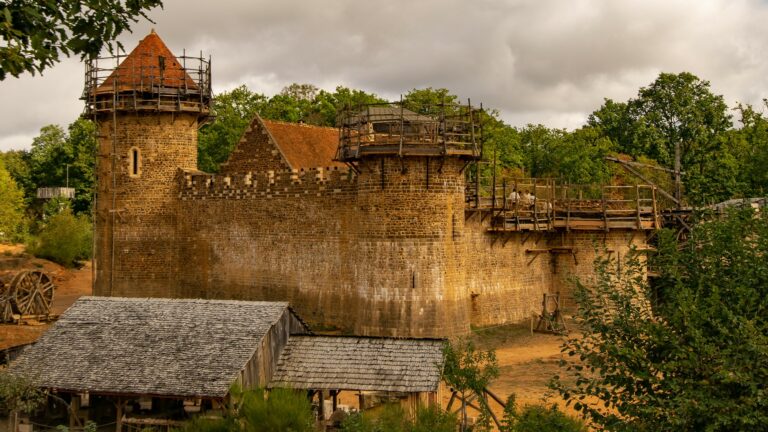Exploring Forts & Fortresses, Castles & Palaces
Featured Castle

Guédelon Castle in Burgundy France
What's In A Name?
Maiden Castle near Dorchester in England is not a castle. Rather, it is an Iron Age hill fort. Palais Gallien in the French city of Bordeaux is not a palace. These are in fact the ruins of a Roman amphitheatre. Examples like these, and there are many other similar misnomers, raise a number of questions. What is a castle? What is the difference between a castle and a palace? Is a castle the same as a French château or a German schloss? What about forts and fortresses?
Despite considerable architectural variation as well as differences in terminology through time and in difference parts of the world, there are some basic definitions we can apply. Of course there are exceptions. Generally, however, castles are fortified structures that were the private residences of lords or noblemen. They are therefore distinct from palaces that are usually not fortified and tend to be royal residences. Romania’s Palace of the Parliament in Bucharest is neither fortified nor has it ever been used as a royal residence.
Although a castle is generally fortified, it is not the same thing as a fort or a fortress. Forts are fortified, defensive structures in which soldiers are stationed tat are built to be defended from attack. Forts are not always permanent. Fortresses on the other hand, tend to be permanent fortified places of security and as such can include towns, forts or castles. A castle surrounded by a town, which in turn is surrounded by walls is a fortified settlement. Carcassonne in France is perhaps one of the most well known examples in France.
Mont Saint Michel, also in France, is often on lists of must see castles in France. Sometimes with the caveat that it is “not technically a castle”. It is not a castle. Briefly, the main feature of the tidal island is an abbey surrounded by a monastic community. Defensive walls were built around the tidal island during the 100 Year’s War making it a fortified settlement. A pretty remarkable one at that.















